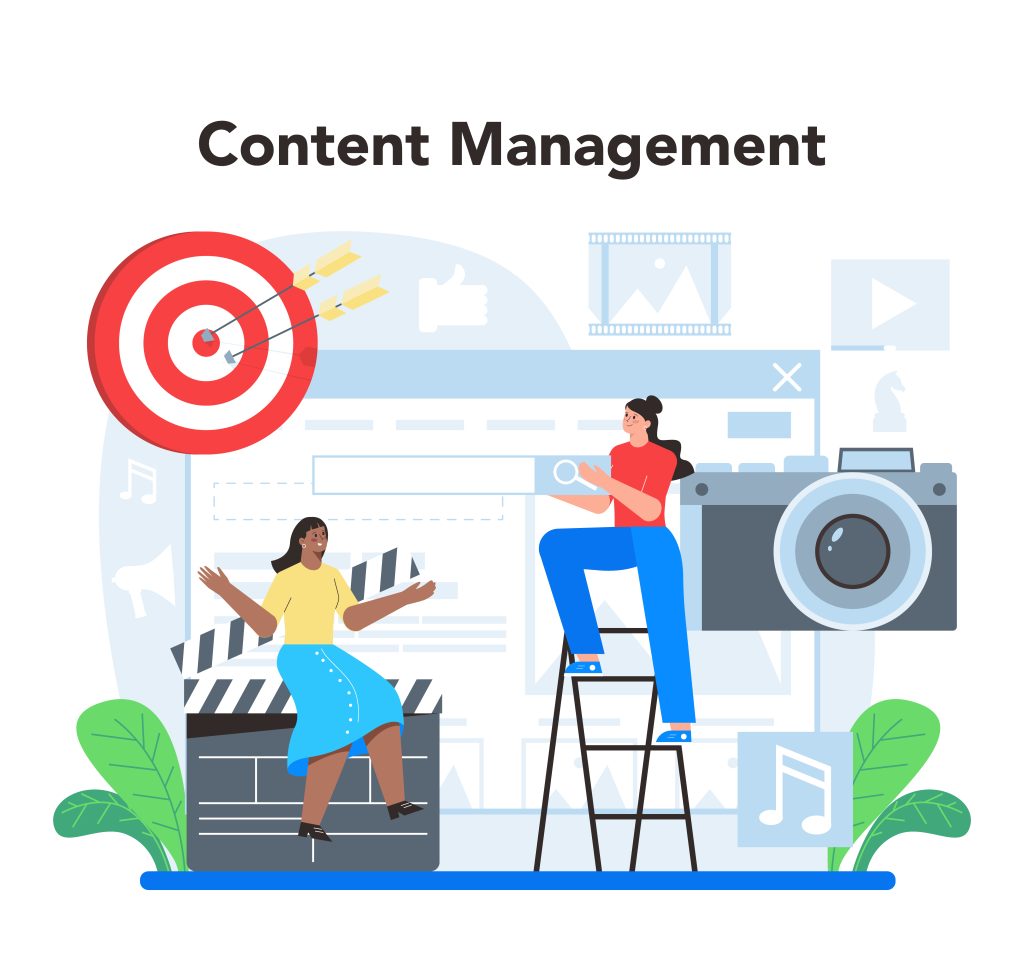
Designed by Freepik
Content management can be a chaotic and complex process. Be it a corporate website or a blog, the problems can be different but the headaches they cause feel the same. An effectively managed content strategy can alleviate these headaches, attract the right audience, and enhance your online presence.
In this blog, we’ll discuss the best practices for making content management a painless and efficient process.
What is Content Management?
Content management is the ongoing process of creating, editing, organizing, publishing, and maintaining website content throughout its lifecycle. A Content Management System (CMS) is a software platform providing the tools and interface to execute your strategy effectively.
Key Best Practices for Content Management
-
Develop a Robust Content Strategy: Clearly define the purpose of your content:
-
What is the purpose of this content?
-
Who is the target audience?
-
These considerations will form the foundation of your content strategy.
-
Choose the Right CMS: Select a user-friendly CMS that prioritizes security, integrates well with analytics, and offers compatibility with other systems you use. Popular options include WordPress, Drupal, Joomla, and Wix.
-
Establish a Content Structure: Define consistent formats for content creation (titles, introductions, body, conclusions). A well-structured approach improves readability and user comprehension. Multiple templates can be defined for different kinds of content.
-
Prioritize User Experience (UX): Focus on clear presentation and easy navigation to maximize audience engagement. Use visuals effectively, and ensure your website displays seamlessly on various devices. Generally, content rich with images and videos are more engaging for the audience.
-
Optimize for Search Engines (SEO):
- By using descriptive keywords, tags and other metadata, page titles which helps in content search.
- Optimize your images, use best file formats JPEG, PNG, WEBP.
- Optimize video files, use smart titles, descriptions, tags, and keywords. Create transcripts and captions for the videos.
- Optimize your website page such that the pages load quickly on all devices.
- Create pages with internal links, thus helping Google understand the content on your page.
-
Define Style Guidelines: Establish a style guide for spelling, grammar, punctuation, formatting, and brand consistency (colors, fonts).
-
Implement a Review and Approval Process: Ensure a rigorous review process is in place before content goes live to optimize quality and accuracy.
-
Add and Update Content Regularly: Consistently update existing content to maintain relevance, and add new content to attract new viewers and keep the existing ones.
-
Promote Your Content:
- Promote and share your content on different social media platforms, channels, or even email.
- Use the social media that is relevant to your content and target audience.
- Add call to actions in your content to boost engagement, thus increasing reach.
-
Analyze and Improve: Use web analytics (e.g., Google Analytics) and marketing tools to track content performance across platforms. Analyze results to guide content optimization and enhance strategy.
Conclusion
By following these practices, you can establish a well-organized and impactful content management process that drives audience engagement and supports your organization’s larger business objectives. Importantly, a strong content management strategy is fundamental to building a recognizable and trusted brand. Consistent, high-quality content positions you as a thought leader, fosters trust with your target audience, and establishes brand loyalty. Effective content marketing also acts as a powerful lead generation tool. Valuable and informative content attracts potential customers, educates them about your offerings, and ultimately nurtures them into qualified leads. By implementing these best practices, you can leverage content management to not only build brand awareness but also generate a pipeline of qualified leads, driving business growth.
If you liked this blog, you may also want to check out Two Questions Every Product Owner Must Ask Themselves
In the last five years, we at CoReCo Technologies, have worked with 60+ various size businesses from across the globe, from various industries and have been part of 110+ such success stories. We applied the latest technologies for adding value to our customers’ businesses through our commitment to excellence.
For more details about such case studies, visit us at www.corecotechnologies.com. If you would like to convert this virtual conversation into a real collaboration, please write to [email protected].
Vaibhav Mevekari
Software Engineer
CoReCo Technologies Private Limited



